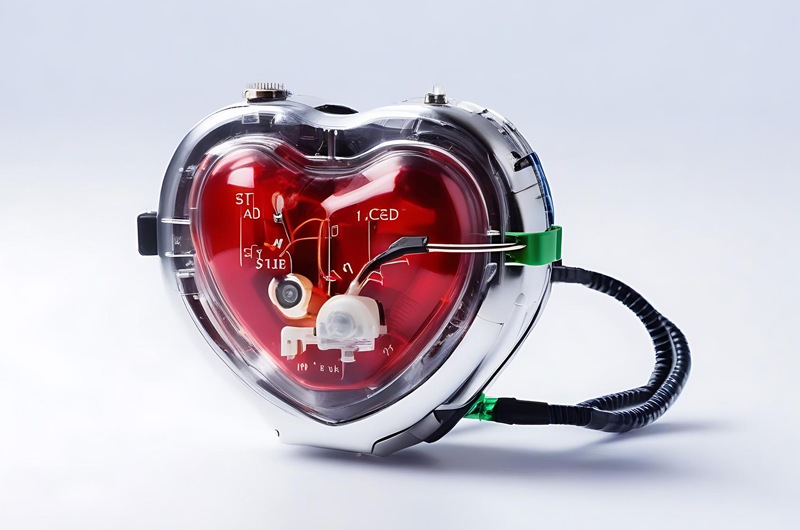Subcutaneous Implantable Cardioverter Defibrillator (S-ICD) System procedures are typically performed on patients who are at risk of sudden cardiac death and have not yet experienced a cardiac event. The actual implantation procedure can be performed as an outpatient procedure and several patients choose this option due to the cost savings possible. Hospital outpatient facilities should use CPT Category III codes 0319T-0328T to report S-ICD System procedures. The outpatient payment is based on the payer policies, not a yearly fee schedule. However, Medicare reimburses outpatient services according to the hospital outpatient prospective payment system (OPPS) which bases payment on Ambulatory Payment Classifications (APCs), supplies, drugs, groups of clinical services and devices that are similar clinically and in the case of resource costs.
CPT Category III Codes
These are temporary codes that represent emerging technology, services and procedures. They are not referred to the AMA – Specialty RVS Update Committee (RUC) for valuation since no relative value units (RVUs) are assigned to these codes. For S-ICD System procedures, hospital outpatient service providers can use these codes to report insertion, removal, replacement, and device analysis. Here are the Category III CPT codes that can be used by outpatient facilities along with corresponding APC (to use for Medicare claims).
- 0319T: Insertion or replacement of subcutaneous implantable defibrillator system with subcutaneous electrode (APC 0107)
- 0320T: Insertion of subcutaneous defibrillator electrode (APC 0106)
- 0321T: Insertion of subcutaneous implantable defibrillator pulse generator only with existing subcutaneous electrode (APC 0107)
- 0322T: Removal of subcutaneous implantable defibrillator pulse generator only (APC 0105)
- 0323T: Removal of subcutaneous implantable defibrillator pulse generator with replacement of subcutaneous implantable defibrillator pulse generator only (APC 0107)
- 0324T: Removal of subcutaneous defibrillator electrode (APC 0105)
- 0325T: Repositioning of subcutaneous implantable defibrillator electrode and/or pulse generator (APC 0105)
- 0326T: Electrophysiologic evaluation of subcutaneous implantable defibrillator (includes defibrillation threshold evaluation, induction of arrhythmia, evaluation of sensing for arrhythmia termination, and programming or reprogramming of sensing or therapeutic parameters) (APC NA)
- 0327T: Interrogation device evaluation (in person) with analysis, review and report, includes connection, recording and disconnection per patient encounter; implantable subcutaneous lead defibrillator system (APC 0690)
- 0328T: Programming device evaluation (in person) with iterative adjustment of the implantable device to test the function of the device and select optimal permanent programmed values with analysis; implantable subcutaneous lead defibrillator system (APC 0690)
C-Codes
Centers for Medicare and Medicaid Services (CMS) insist hospitals to report device-related category codes or C-Codes while filing Medicare claims, if medical devices are used in procedures performed in outpatient facilities. Here are examples of C-Codes for reporting S-ICD system procedures.
- C1722: Cardioverter-defibrillator, single chamber (implantable)
- C1896: Lead, cardioverter-defibrillator, other than endocardial single or dual coil (implantable)
The outpatient coding edits which map the specific C-Codes to their corresponding CPT codes have been introduced by the CMS. However, the list of coding edits is not all inclusive and new edits will be added to the list by Medicare on a quarterly basis together with the quarterly Outpatient Coding Editor (OCE) release. Typically, C-Codes are not required for commercial payers and may require only CPT codes. Even so, the outpatient hospitals should make sure that any additional coding requirements are specified by the payer in the case of a non-Medicare patient.
Prior Authorization
Though Medicare does not require prior-authorization for the S-ICD System procedures, commercial insurance plans require performing prior authorization for these procedures. Prior authorization is a process that allows healthcare providers to submit a treatment plan before surgery which is reviewed by the insurer along with the patients’ insurance benefits and medical policy to confirm coverage of treatment and applicable patient responsibility (for example coinsurance and/or copay, deductibles, and out-of-pocket amounts). The pre-authorization process varies according to the insurer and outpatient hospitals should contact the insurers to follow their specific requirements. Typically, prior authorization requests generally comprise the following elements.
- Patient information such as name, date of birth and policy number
- Patient’s medical history details
- Description of the patient’s current health condition and treatment plan
- Letter of medical necessity (LOMN) that documents the patient’s medical need
- Proposed procedure(s), medical device implanted and rationale for treatment
- Proposed location where the service will be delivered and the dates planned
- Summary of the clinical evidence that supports the treatment plan including co-morbidities as well as the copies of published literature supporting safety and effectiveness of treatment
- Description of the technology and rationale for using it in the surgery
- Copy of the FDA approval letter
Apart from sending pre-authorization requests, outpatient hospitals should take every effort to avoid claim denials with the use of appropriate codes and by filing claims in a timely manner. If the claim gets rejected even after taking proper effort, they can proceed with the appeal process to prove their point.




